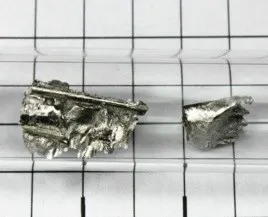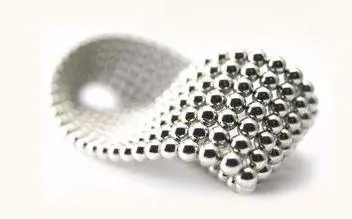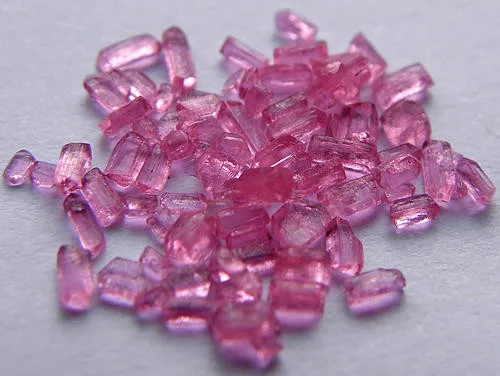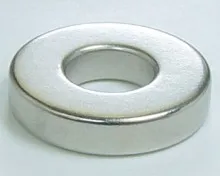Neodymium is one of the most active rare earth metals
In 1839, Swedish C.G.Mosander discovered the mixture of lanthanum (lan) and praseodymium (pu) and neodymium (nǚ).
After that, chemists all over the world paid special attention to separating new elements from discovered rare earth elements.
In 1885, A.V.Welsbach, an Austrian, discovered praseodymium and neodymium from a mixture of praseodymium and neodymium considered by Mossander as “new elements”. One of them was named neodymium, which was later simplified to Neodymium. The symbol Nd is neodymium.

Neodymium, praseodymium, gadolinium (gá) and samarium (shan) were all separated from didymium, which was considered as a rare earth element at that time. Because of their discovery, didymium is no longer preserved. It is their discovery that opens the third door to the discovery of rare earth elements and is the third stage of the discovery of rare earth elements. But this is only half of the work in the third stage.Exactly, the gate of cerium should be opened or the separation of cerium completed, and the other half should be opened or the separation of yttrium completed.
Neodymium, chemical symbol Nd, silvery white metal, is one of the most active rare earth metals, with melting point of 1024°C, density of 7.004 g/㎝, and paramagnetism.

Main uses:
Neodymium has become a hot spot in the market for many years because of its unique position in the field of rare earths. The largest user of neodymium metal is NdFeB permanent magnet material. The advent of NdFeB permanent magnets has injected new vitality into the rare earth high-tech field. NdFeB magnet is called “the king of permanent magnets” because of its high magnetic energy product.It is widely used in electronics, machinery and other industries for its excellent performance.
Neodymium is also used in non-ferrous materials. Adding 1.5-2.5% neodymium to magnesium or aluminum alloy can improve the high temperature performance, air tightness and corrosion resistance of the alloy, and is widely used as aerospace materials.
In addition, neodymium-doped yttrium aluminum garnet produces short-wave laser beam, which is widely used in welding and cutting thin materials with thickness below 10mm in industry.
In medical treatment, Nd: YAG laser is used to remove surgery or disinfect wounds instead of scalpel. Neodymium is also used for coloring glass and ceramic materials and as an additive for rubber products.
With the development of science and technology and the expansion and extension of rare earth science and technology, neodymium will have a wider utilization space.

Neodymium (Nd) is a rare earth metal. Pale yellow, easily oxidized in air, used to make alloy and optical glass.
With the birth of praseodymium, neodymium came into being. The arrival of neodymium activated the rare earth field, played an important role in the rare earth field, and influenced the rare earth market.
Application of Neodymium: It is used to make ceramics, bright purple glass, artificial ruby in laser and special glass capable of filtering infrared rays. Used together with praseodymium to make goggles for glass blowers. Mich metal used in steelmaking also contains 18% neodymium.
Neodymium oxide Nd2 O3; The molecular weight is 336.40; Lavender solid powder, easy to be affected with damp, absorbing carbon dioxide in air, insoluble in water, soluble in inorganic acid. The relative density is 7.24. The melting point is about 1900℃, and the high valence oxide of neodymium can be partially formed by heating in air.
Uses: Used for making permanent magnet materials, colorants for glass and ceramics and laser materials.
Nanometer neodymium oxide is also used for coloring glass and ceramic materials, rubber products and additives.
Pr-nd metal; The molecular formula is Pr-Nd; Properties: Silver-gray metallic block, metallic luster, easily oxidized in air. Purpose: Mainly used as permanent magnet material.

Protective treatmentneodymium has strong irritation to eyes and mucous membrane, moderate irritation to skin, and inhalation can also cause pulmonary embolism and liver damage.
Action object:
Irritating to eyes, skin, mucous membrane and respiratory tract.
Solution:
1. Inhalation: leave the site to fresh air. If breathing is difficult, give oxygen. Seek medical attention.
2. Eye contact: Lift the eyelid and rinse with running water or normal saline. Seek medical attention.
3. Skin contact: Take off contaminated clothes and rinse with running water.
4. Eating: Drink plenty of warm water to induce vomiting. Seek medical attention.
Tel: +86-21-20970332 Email:info@shxlchem.com
Post time: Jul-04-2022